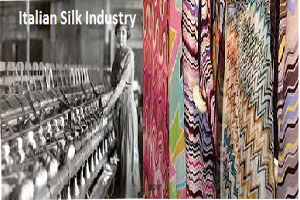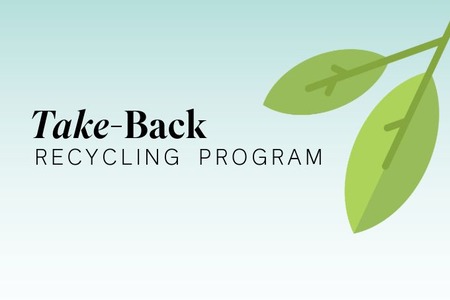
Italian silk makers trying to spin a niche to reinstate age old silk industry
YarnsandFibers News Bureau 2015-07-20 10:00:00 – CASTELFRANCO VENETO, ItalyA new beginning for silk sector decades after Veneto's last silk mills were closed as a post-war economic boom lured farmers to cities, budding silkmakers - or sericulturists are making attempt to spin a niche around a traceable supply chain of high-quality material. They are nourishing hopes of a revival of Italy's 1,000 year-old silk industry as clusters of silkworms munch on piles of locally-grown mulberry leaves in a white marquee in Italy's northern Veneto region.
Giampietro Zonta, a jeweler who started producing his own silk last year in order to make a line of bracelets and necklaces made of interwoven gold and silk. Zonta's company D'Orica has joined forces with a scientific research center and three agricultural cooperatives to produce the silk from scratch. Last year, they harvested 800 grams.
This budding silk industry is minuscule compared to the 130,000 tonnes of silk China manufactured in 2013, according to the International Sericultural Commission.
Italy is one of the world's major importers uses the mainly Chinese silk to make finished fabric, neckties, scarves, shirts and dresses which had a combined export value of more than 890 million euros (US$975 million) in 2012, according to trade body Ufficio Italiano Seta.
Yet Zonta's project is one of various efforts cropping up across Italy led by entrepreneurs wanting to capitalize on a timid economic recovery to launch businesses tied to the country's traditional specialities – in this case, fashion. Zonta's project received 127,000 euros in regional government funding, but the group is financing most of the work itself and looking for more support.
The silkmakers are worried about the future of the government-owned agricultural research center in Padua, near Venice, where they work as the center may be moved as part of a country-wide reorganization of agricultural research aimed at improving efficiency. But the relocation may endanger the live organisms and waste money poured thus far into the project, said the Padua center's chief researcher Silvia Cappellozza. The whole production chain is starting again here in Veneto. All of this would be lost.
According to the national union of chambers of commerce Unioncamere, Italian entrepreneurship is still suffering after two decades of economic stagnation and three years of recession, but there are signs of a recovery. Fewer new ventures opened in the first quarter of 2015 than in the same period of last year, but the number of closures dropped more sharply.
In Italy the overall manufacturing costs are still 30 percent higher than China, but companies including Italian leather goods brand Piquadro have brought some production home, thereby saving on transport costs and import duties. According to Italy's silkmakers, producing locally allows for stricter quality control.
Fashion industry body Sistema Moda Italia said that textile producers pay around 48 euros (US$53) a kilogram to import the raw material, but buyers of silk for other specialized uses like skincare pay more for the locally-grown quality guarantee.
Alessandro Di Grazia, product developer at Italian dental product maker FIMO, branched out into skincare to make a sort of thimble made of a silkworm cocoon for cleaning the skin. He buys Veneto-grown cocoons for 0.6 euros each to use in the product, a certified medical device sold in pharmacies.
Di Grazia said that using Italian silk is very important for them because they know who has made it and how. For their purposes they need extremely clean cocoons.
Silkworm eggs and rearing techniques came to Europe from Asia along the trade routes known as the "Silk Road". They arrived around the year 1000 in Italy, where production reached a peak in the late 1800s with output topping 60,000 tonnes of cocoons a year.
But two world wars in quick succession at the beginning of the twentieth century changed the social and economic fabric of Europe. Soon after the second conflict, Italy began a period of industrialization which was to spell the end of sericulture.
Now the industry in China, which makes some 85 percent of the world's silk, is under pressure from its own economic boom. Due to rapid industrialization and urbanization, silk production in the country may decline considerably in the coming years, said Kurada Keshendra Shetty of the Bangalore-based International Sericultural Commission.
Meanwhile, demand for silk is rising as people in China and India get richer, according to Shetty, and there is an immediate need to start up the silk industry in new places.
According to Dr. Long Li, deputy director of the Sericultural Research Institute at the Chinese Academy of Agricultural Sciences, as part of the process of industrialization, young Chinese people are losing interest in sericulture and many young farmers rush into (the) city to earn more money.
The cooperatives of the Veneto are not the only Europeans who are starting production again in Europe. The Swiss Silk Producers Association, led by farmer and textile engineer Ueli Ramseier, started production in 2009 and made 13 kilograms of raw silk, equivalent to 270 neckties and sold to necktie makers for 450 Swiss francs (US$478.52) a kilogram, is aimed at high-end products.
Market Intelligence
Ask for free sample Report

experience
Customer Base
dedicated team
Countries Served Worldwide









